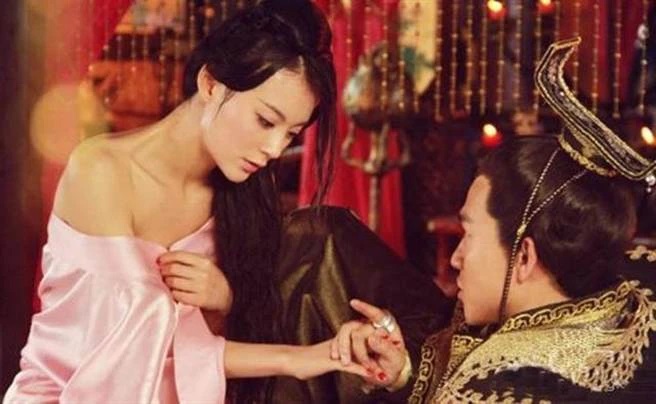The Suffering of Duong Quy Phi
Duong Quy Phi (real name Ngoc Hoan), lived in the 8th century. At the age of 17, she was married to the 18th prince out of the 30 sons of Emperor Duong Minh, named Ly Mao. Many books mention that because Ly Mao was still young, there was no sexual relationship between the couple for the first 3 years of marriage.

Meanwhile, Duong Minh, Ly Mao’s father, was grieving and found solace in Ngoc Hoan’s exquisite beauty. He wanted to turn his daughter-in-law into his wife, so he sent her to become a nun to take care of the worshiping of his favorite concubine, Vu Hue Phi. Ngoc Hoan became known as Thai Chan. Once she became a nun, all secular relationships ended; she was no longer the wife of Ly Mao or the daughter-in-law of Duong Minh. Therefore, the king was able to bring Ngoc Hoan back to the palace and make her the Royal Concubine.
The whole Duong Quy Phi family was granted titles and ranks. Moreover, their relatives were also given noble titles, entering the imperial court. Meanwhile, the aging king abandoned all his official duties, focusing only on pleasure. This led to a rebellion by the trusted general Dot Quyet An Loc Son, who allegedly had an illicit relationship with Duong Quy Phi. An Loc Son rebelled, framing Duong Quoc Trung (Duong Quy Phi’s cousin), and Duong Minh had to flee the capital. Under pressure from the military, who had long held a grudge against the Duong family, blaming them for all the troubles, Duong Minh had to take his beloved concubine’s life. At that time, Duong Quy Phi was 38 years old.
The Enchanting Beauty of Duong Quy Phi
Despite suffering from a disease, Duong Quy Phi knew how to conceal the body odor. She would frequently bathe multiple times a day and use fragrant herbs to eliminate the smell. In addition, she also used essential oils such as jasmine oil, virgin tree oil, aromatic grass oil, elderberry oil, incenseo leaf oil, etc., to create a pleasant fragrance for her body. Because of this, whenever Emperor Duong Huyen Tong visited her, she was clean and fragrant, with exceptional beauty that captivated the king.
Her figure was also worth mentioning. Duong Quy Phi did not possess the “willow-like waist and apricot blossom” figure like other beauties. She had a full and even plump figure, weighing 65-68kg and standing at 1m64, showing vitality. Emperor Duong Huyen Tong appreciated beauty and allure. He believed that Duong Quy Phi’s well-rounded figure symbolized abundance and wealth.

In addition to her beauty and figure, Duong Quy Phi was also a person with good character and extraordinary talents. She had singing and dancing skills, played musical instruments, and wrote poetry. She was also intelligent, clever, and skilled in handling official affairs. These factors made Emperor Duong Huyen Tong infatuated with and adored Duong Quy Phi.
The love story of Emperor Duong Huyen Tong and Duong Quy Phi is a famous historical story in China, with the legend that they fell in love at first sight. At that time, Duong Ngoc Hoan, at the age of 14, was chosen as the queen of Ly Mao, who was the son of Emperor Duong Huyen Tong and Vu Hue Phi. However, the Emperor was instantly captivated by her beauty but hesitated due to their relationship as in-laws. After that, another beauty named Vi Thi was chosen to be Ly Mao’s queen, and Duong Ngoc Hoan was brought into the palace as a concubine.































